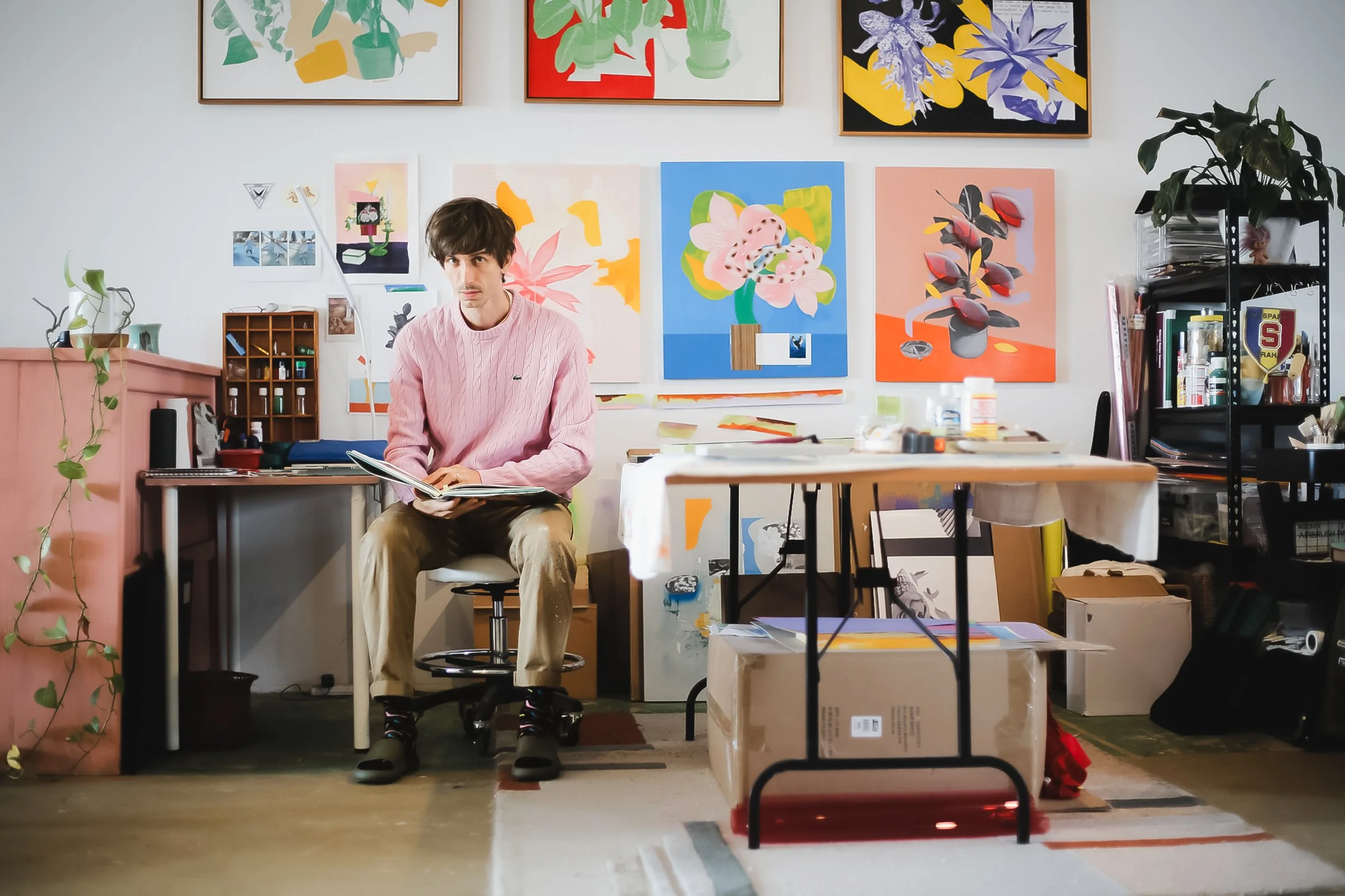Kubi Vasak
Cut from intuition and grounded in design, Kubi Vasak’s practice turns texture, colour, and memory into a visual language—bridging past and present through the art of collage.
Words & Photos HANDE RENSHAW
‘I’d say my visual language is really rooted in how I see the world through a design lens. I’m always noticing shape, line, form, contrast, the fundamental elements.’
‘I’m definitely drawn to imagery from the 50s to 70s. There’s something about the texture of offset printing from that era, the grain, the colour, that brings a real sense of depth and nostalgia.’
‘I usually have a pretty clear idea of what I want to work on, though I leave room for things to shift. A lot of the planning happens beforehand—colour studies, mock-ups, composition ideas, often digitally.’
“Colour is so central to how we emotionally read an artwork. I spend a lot of time thinking about palette, not just in terms of what ‘looks good’ but how colours create tension, harmony, or energy when placed together.”
‘I think I’ve gotten better at knowing when to stop. These days, it’s more of a gut feeling, a sense of harmony and balance that tells me the work has landed.’
‘I like the idea that the image has travelled, that it once belonged to someone else, carried their story in another lifetime, and now I get to reshape it and give it a new identity. Those vintage textures bring a richness that’s hard to replicate digitally.’
A decade ago, Kubi Vasak was immersed in the music industry, cutting his teeth in PR and management. But behind the scenes, it was a DIY bootleg copy of Photoshop and an intuitive grasp of visual rhythm that sparked his next chapter.
What began with band posters and image edits slowly shifted into a conversation with composition, leading him to formally study graphic design and eventually return to the analogue collage techniques he first explored in high school.
Today, Kubi's visual language is deeply grounded in both design logic and emotional spontaneity, merging paper, texture, colour and story into tactile, richly layered works.
‘I’m always noticing shape, line, form, contrast,’ Kubi shares. ‘When I’m creating, I’m looking for a kind of connection between the imagery, the forms they create, and how they sit with colour.’ That connection, and the tension between harmony and dissonance, is what gives his work such resonance. Whether working digitally or with scissors and glue, Kubi brings a sensibility rooted in intuition and precision—a balance of control and chaos.
In 2015, Kubi co-founded the Sydney Collage Society alongside Leah-Anne Early, a fellow local collage artist. What began as a local group show quickly evolved into a full-scale creative platform, offering workshops, public art collaborations, and community-led exhibitions that reflect the medium’s growing visibility in the Australian arts landscape. ‘Watching the community grow, seeing people’s practices shift and evolve, it’s been amazing to be part of that,’ he says.
While his work has appeared in international shows and alongside global names like Felipe Pantone and Lizzie Gill, Kubi remains guided by his own internal compass. ‘There’s a fine line between being inspired and being a copycat,’ he reflects. ‘For me, it’s always been about finding your own way through trial, error, and play.’
His process is equal parts considered and instinctive. Most pieces begin with a digital plan—mock-ups, palette studies, composition tests—before Kubi translates them into physical form in his studio. ‘It’s a mix of planning and play, about 50/50,’ he explains. ‘The best moments often come from things not going to plan.’
Drawn to mid-century offset printing, Kubi sources vintage materials from the 50s to 70s, attracted to their grain, colour and embedded stories. ‘I’m not just looking for a pretty picture; I’m searching for something that holds a story, even if it’s ambiguous.’ He continues, ‘I like the idea that the image has travelled, that it once belonged to someone else, carried their story in another lifetime, and now I get to reshape it and give it a new identity. Those vintage textures bring a richness that’s hard to replicate digitally.’
Teaching Creative Direction & Styling at Whitehouse Institute of Design has also deepened his understanding of visual language. ‘Teaching forces you to break down your own process,’ he says. ‘It’s made me more intentional.’
Looking ahead, 2025 will see Kubi prepare for new exhibitions, a large-scale commission for the new Olympia 25Hours Hotel opening in Paddington later this year, and an exhibition for the ten-year anniversary of the Sydney Collage Society.
To stay up to date with Kubi’s work and exhibitions, visit his website or follow @kubism_ on Instagram.










